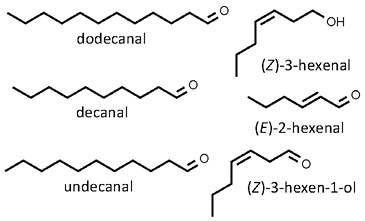 Persicaria odorata
Persicaria odorata
Vietnamese coriander • Vietnamese mint • laksa leaf
Back to “Salad herbs and herb mixtures: laksa leaf (Persicaria odorata); Vietnamese coriander / mint (Persicaria odorata)”
Back to “Culinary herbs: laksa leaf (Persicaria odorata); Vietnamese coriander (Persicaria odorata); Vietnamese mint, rau ram (Persicaria odorata)”
Persicaria odorata (Lour.) Soják (= Polygonum odoratum Lour.); (Polygonaceae); Viëtnamese koljander, laksaplant (Afrikaans); la liao, laksa-yip (Chinese); coriandre du Vietnam (French); Laksa Blatt, Vietnamesische Minze (German); daun kesum, daun laksa (Malay); phak phai (Thai); rau ram (Vietnamese)
DESCRIPTION Fresh leaves are bright green and taper to a narrow tip, each with a distinctive reddish brown marking usually present near the base. They have a warm and fragrant aroma reminiscent of cilantro and a spicy, slightly lemony taste that becomes hot and peppery.
THE PLANT The laksa plant is a spreading perennial herb with soft stems, characteristic sheathing stipules and small pink flowers. It is similar to the semi-aquatic water pepper (Persicaria hydropiper) but this species has an erect growth form and leaves are without brown spots. Sikkim knotweed (P. mollis) is yet another member of the genus with culinary value. It is used as a potherb.1
ORIGIN Southeast Asia.1 It is nowadays commonly cultivated as a culinary herb in many parts of the world.2
CULTIVATION Cuttings are very easily rooted or side shoots with roots may be planted. The plant thrives in tropical conditions but grows best in partial shade. In cold regions, it can be grown in a container and protected or taken indoors in winter. Reduce watering in winter and cut the plants back in summer to stimulate new growth.2
HARVESTING Leaves are picked fresh throughout the season when required.
CULINARY USES Leaves are always eaten fresh, never cooked. They are an essential ingredient of laksa, the well-known Singaporean and Malaysian seafood noodle soup (sometimes made with chicken). The soup is served with many vegetables, a spicy bumbu and a generous helping of freshly chopped laksa leaves as garnish. Fresh leaves are especially popular in Vietnamese and Thai cuisines and are commonly served with noodle soups (into which they are dipped when eaten). The leaves are an ingredient in salads, fresh spring rolls and many other Vietnamese dishes.
FLAVOUR COMPOUNDS Vietnamese coriander is sometimes referred to as a cilantro mimic. The essential oil, known as kesom oil, is variable but dodecanal and decanal are usually the main aroma compounds, with smaller amounts of undecanal.3 The cilantro-like smell are ascribed mainly to these constituents. Also present are (Z)-3-hexenal, (E)-2-hexenal and (Z)-3-hexen-1-ol, compounds known for their green smell, reminiscent of freshly cut grass.3

NOTES Several culinary herbs used in Vietnamese cuisine are rather poorly known to Western cooks or they are not considered to be of culinary value in the rest of the world.4 Fishwort/fish mint or giâp cá (Houttuynia cordata) is used as a fresh garnish and leaf vegetable. Knotweed or rau ngò (Polygonum aviculare) is used in soup and in the popular hot pot. Rice paddy herb or ngò ôm (Limnophila aromatica) has a lemony flavour and is used in canh chua, a sweet-and-sour seafood soup.4 Vietnamese balm or kinh giói (Elsholtzia ciliata) is used with grilled meats. The leaves and seeds of Gnetum gnemon (rau danh in Vietnamese, melinjo in Indonesian) are ingredients of vegetable dishes and soups, while flour made from ground seeds is used to make deep-fried Indonesian emping crackers.
1. Mabberley, D.J. 2008. Mabberley’s plant-book (3rd ed.). Cambridge University Press, Cambridge.
2. McVicar, J. 2007. Jekka’s complete herb book. Kyle Cathie Limited, London.
3. Quynh, C.T.T., Iijima, Y., Morimitsu, Y., Kubota, K. 2009. Aliphatic aldehyde reductase activity related to the formation of volatile alcohols in Vietnamese coriander leaves. Bioscience, Biotechnology, and Biochemistry 73: 641−647.
4. Gernot Katzer’s Spice Pages (http://gernot-katzers-spice-pages.com).